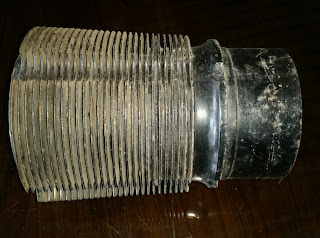Crankshaft
Crankshaft is carried in a position parallel to the longitudinal axis of the crankcase and is generally supported by a main bearing between each throw.The crankshaft main bearings must be supported rigidly in the crankcase.
Crankshaft is the backbone of the engine transform the reciprocating motion of the
piston and connecting rod into rotary motion for rotation of the propeller.
Crankshaft is a shaft composed of one or more cranks. The cranks, or throws, are formed by forging offsets into a shaft before it is machined.
Crankshafts ( very strong) forged from a very strong alloy, such as chromium-nickel-molybdenum steel may be of single-piece or multi piece construction.
Crankshaft has three main parts—a journal, crankpin, and crank cheek.
Counterweights and dampers are usually attached to it to reduce engine vibration.
Journal is supported by, and rotates in, a main bearing. It serves as the center of rotation of the crankshaft. It is surface hardened to reduce wear.
Crankpin is the section to which the connecting rod is attached. It is off-center from the main journals and is often called the throw.
Throw -Two crank cheeks and a crankpin make a throw. When a force is applied to the crankpin in any direction other than parallel or perpendicular to and through the center line of the crankshaft, it causes the crankshaft to rotate.
The outer surface is hardened by nitriding to increase its resistance to wear and to provide the required bearing surface.
Crankpin is usually hollow. This reduces the total weight of the crankshaft and provides a passage for the transfer of lubricating oil.
Crank cheek connects the crankpin to the main journal. In some designs, the cheek extends beyond the journal and carries a counterweight to balance the crankshaft. The crank cheek must be of sturdy construction to obtain the required rigidity between the crankpin and the journal.



Comments
Post a Comment